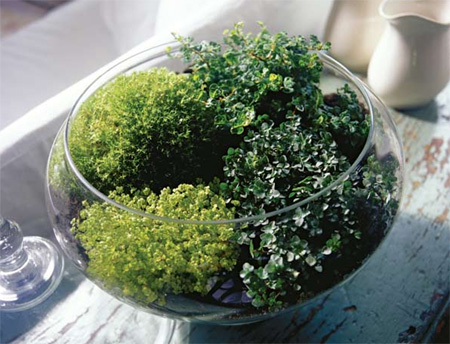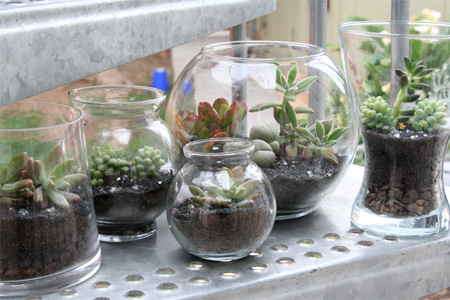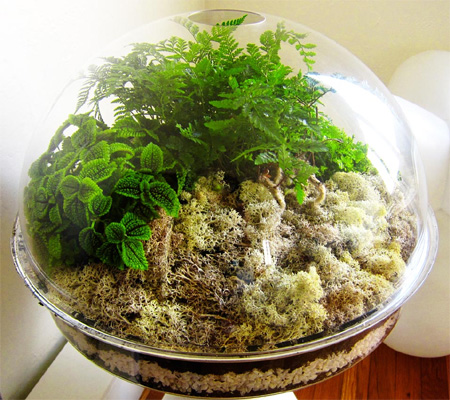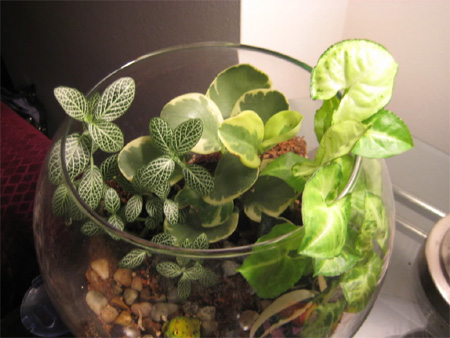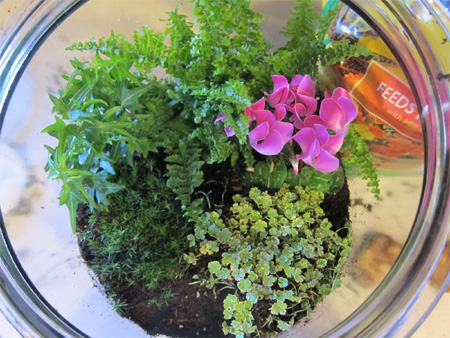Make a herb or plant terrarium
Today’s terrariums are more sophisticated than the plastic domes and plastic flowers of yesteryear - they are all about being creative and are perfect for flat or apartment dwellers who would like to grow their own herbs or those that would like a little live greenery in their homes.
Terrariums are miniature enclosed gardens. Any type of house plant can be grown in a terrarium arrangement, with exception of succulents, which are prone to rot in humid environments and these are best kept in open dishes.
fire and flowers
Terrariums require a minimum of care if they are kept sealed. The moisture that plants absorb from the soil is given off through the leaves by the process of transpiration. This condenses on the walls and runs down to moisten the soil again. The atmosphere also remains balanced through the combined plant processes of photosynthesis and respiration. A well-constructed terrarium requires only light and warmth to flourish.
gregory han
Whether you want to plant up a few colourful annuals, or a small kitchen herb garden, a well-designed terrarium can supply a garden in a jar! Any acrylic or plastic bowl will do - simply drill a couple of holes into the base to allow for drainage. Take a look around your home - you might already have containers that can be put to use as a terrarium.
CONTINUES BELOW
Anything goes— aquariums, glass teapots, apothecary jars, canning jars - you name it. Mix and match lids, or requisition a glass plate as a cover. Then pop on a sunny windowsill or countertop, give a light watering every morning or evening, and watch those herbs grow. If you prefer a closed terrarium - these act like a biosphere, sealing in moisture and drastically reducing watering duties. But do remember to select plants that thrive in high humidity, low light and that won't mind abundant moisture. After the first watering your terrarium is good to go for weeks on end.
helpful gardener
Set up your terrarium
Find plants to grow to a small height - the best terrarium plants are those that stay small, prefer low light and thrive in high humidity. And those are just the sort of plants that tend to show up in the supermarket floral section. Even plants that look lackluster at first glance can glitter under glass. Wearing gloves, place 2 to 3cm of pebbles in the bottom of the container. Add a small handful of charcoal pieces, mixing them with the pebbles and levelling off the layer. This layer keeps any water that trickles down from smelling swampy.
The next layer is the soil. Put in premoistened soil, level it, and gently tamp it in. The soil mix should be slightly damp but not too wet. Make a small hole in the soil, tuck in a plant and tamp it in, making sure no roots are showing.
Do a gentle "tug test" to be certain that it’s firmly planted. Don’t crowd in too many plants, you need to leave some room for other elements such as lichen-covered twigs, seedpods, seashells and pretty little stones you’ve picked up. Tap into your inner landscape designer and have some creative fun. Rotate the terrarium occasionally to make sure that the entire "landscape" receives equal light. Condensation on the glass is normal and means your small world is getting along perfectly well.
ninnys notes

